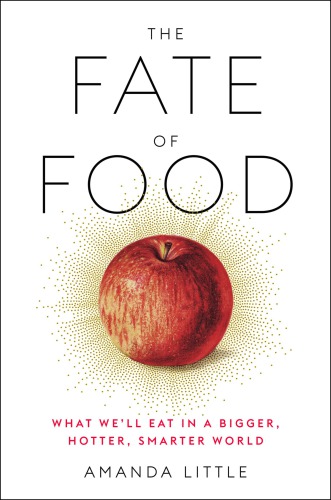
The Fate of Food
What We'll Eat in a Bigger, Hotter, Smarter World
کتاب های مرتبط
- اطلاعات
- نقد و بررسی
- دیدگاه کاربران
نقد و بررسی

April 15, 2019
A wide-ranging examination of approaches to food production that point the way to feeding the more crowded, hotter, and drier world of the future. Environmental journalist Little (Journalism and Writer-in-Residence/Vanderbilt Univ.; Power Trip: From Oil Wells to Solar Cells--Our Ride to the Renewable Future, 2009) recounts her travels around the globe seeking out stories that illustrate problems and solutions related to food production and climate change. Among others, she had insightful discussions with farmers in Wisconsin, Mexico, China, and Kenya. In Norway, a salmon farmer introduced her to aquaculture, and in New Jersey, she learned the hows and whys of aeroponics, or vertical farming. An Israeli engineer demonstrated to the author that country's solutions to the water shortage, and she visited a California lab where cultured meat is being grown via cellular agriculture. Besides giving readers entertaining profiles of her interviewees, she shares her experiences in a lively, personable manner with just a few statistics and lots of pertinent quotes. She chronicles how she ate cultured meat and 3-D-printed food and drank specially treated water. Little, an open-minded author who has a knack for picking the brains of the right people, also looks at food waste, ancient crops with traits of climate resistance, cloud-seeding, and 3-D printing of military meals. The illustrations are rather sparse, small, and black-and-white, but one worth the price of admission reveals an "unsuccessful attempt to 3D-print hummus flatbread with an avocado star." As the author shows, true innovation takes patience and time. Little's take-home message is that innovation combined with good judgment can provide the solutions to the coming food crisis. She calls for a synthesis of the wisdom of the past with the ingenuity of the present to help us survive the future. An important, well-documented report that is highly readable, fact-filled, and eye-opening.
COPYRIGHT(2019) Kirkus Reviews, ALL RIGHTS RESERVED.

June 1, 2019
There is no question that by the middle of the century how we grow and process our food will be vastly different from how we do it at present. Earth's population will be substantially larger, and our climate, given recent noticeable temperature changes, will be appreciably warmer. Seeking to examine how our world will react and deal with this oppressive reality is the focus of this timely work from Little (journalism, Vanderbilt Univ.), who researches what will have to be done to adapt in this new environment. The author's exploration of drought-tolerant super grains such as morgina and kernza seems to hold much promise, as do various efforts to desalinate water and the lengths taken by government entities and private companies to reduce food waste. While much of what Little discusses is cause for alarm, including the myopic use of water and the unbelievable amount of food wasted in affluent countries, she does give reasons for optimism. Humans, if nothing else, are able to overcome challenges by manipulating the world around us--especially in terms of our diets. VERDICT An informative, highly recommended read that touches on every relevant area of the subject and will have wide appeal.--Brian Renvall, Mesalands Community Coll., Tucumcari, NM
Copyright 2019 Library Journal, LLC Used with permission.

May 1, 2019
This is an optimistic look at the future of the world's food supply, a subject that causes considerable angst when linked to climate change, rising sea temperatures, exploding population figures, clean water shortages . . . . Well, enough with the negatives. This take is positive and entertaining, as Little (Power Trip, 2009) documents her travels visiting farmers, botanists, and entrepreneurs: visionaries working to secure sustainable nourishment at the personal to international-conglomerate levels. The text is upbeat and peppered with wry observations (a blood-splattered chicken farmer looks like Katniss Everdeen crossed with a Jackson Pollock painting ), snippets from Robert Frost and Dr. Seuss, and personal critiques of engineered foods (one being Soylent, an adult baby formula available through Amazon). Some projects are still small scale, and most are still in the tinkering stage (robot crop harvesters; 3D-printed sandwiches), but the conclusion is that while food may someday look and taste a little different, science and ingenuity will keep it on our tables.(Reprinted with permission of Booklist, copyright 2019, American Library Association.)

























دیدگاه کاربران